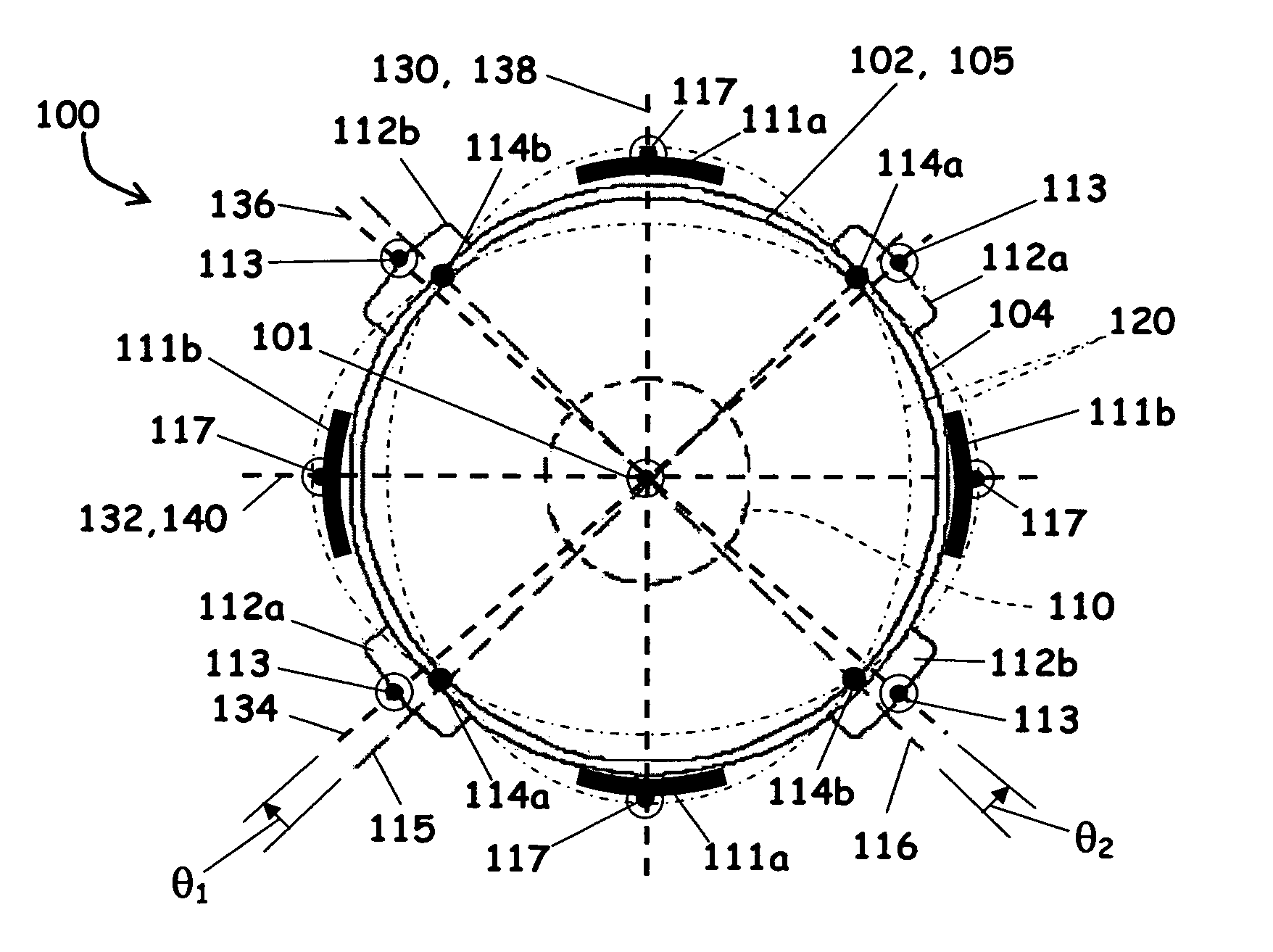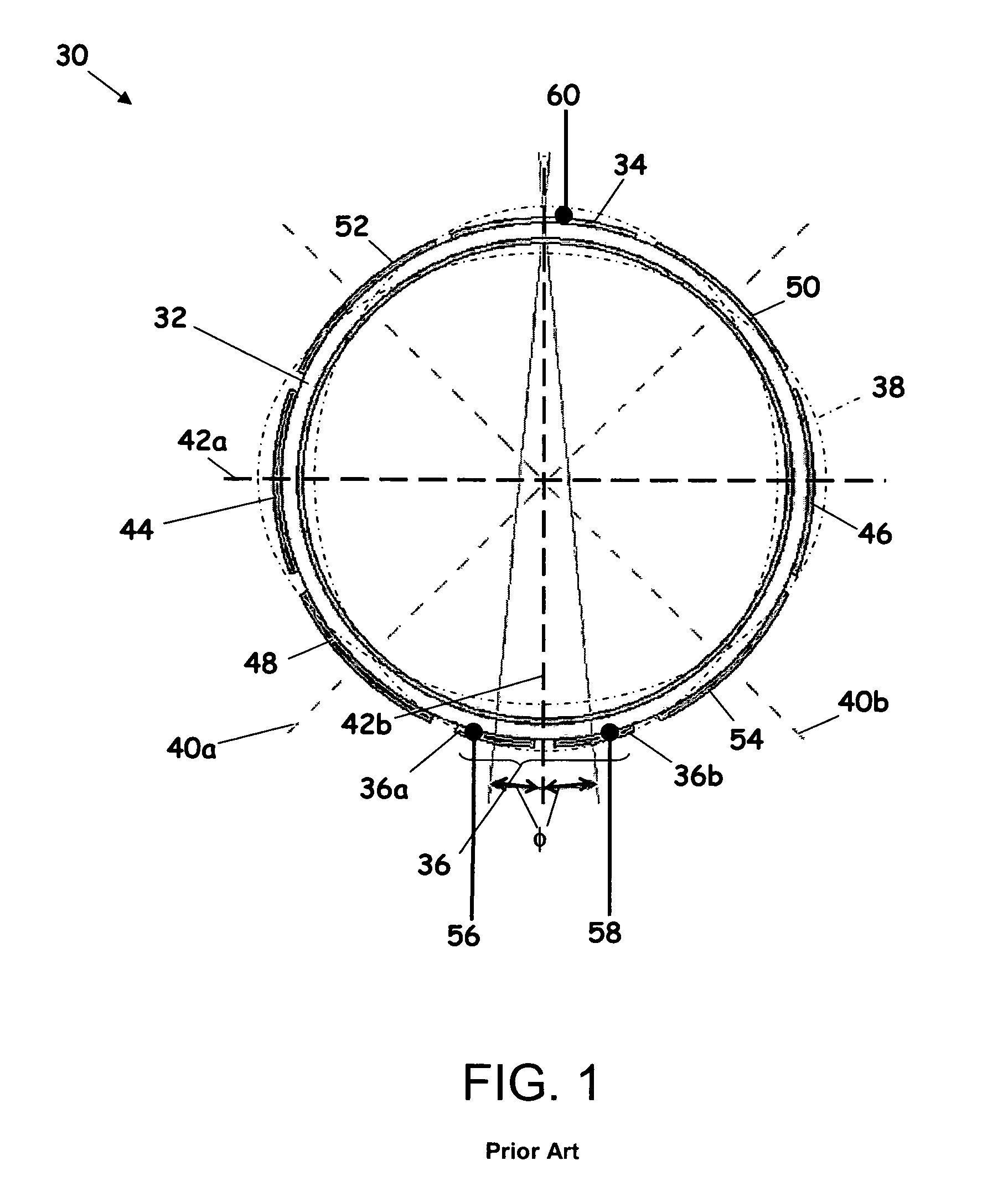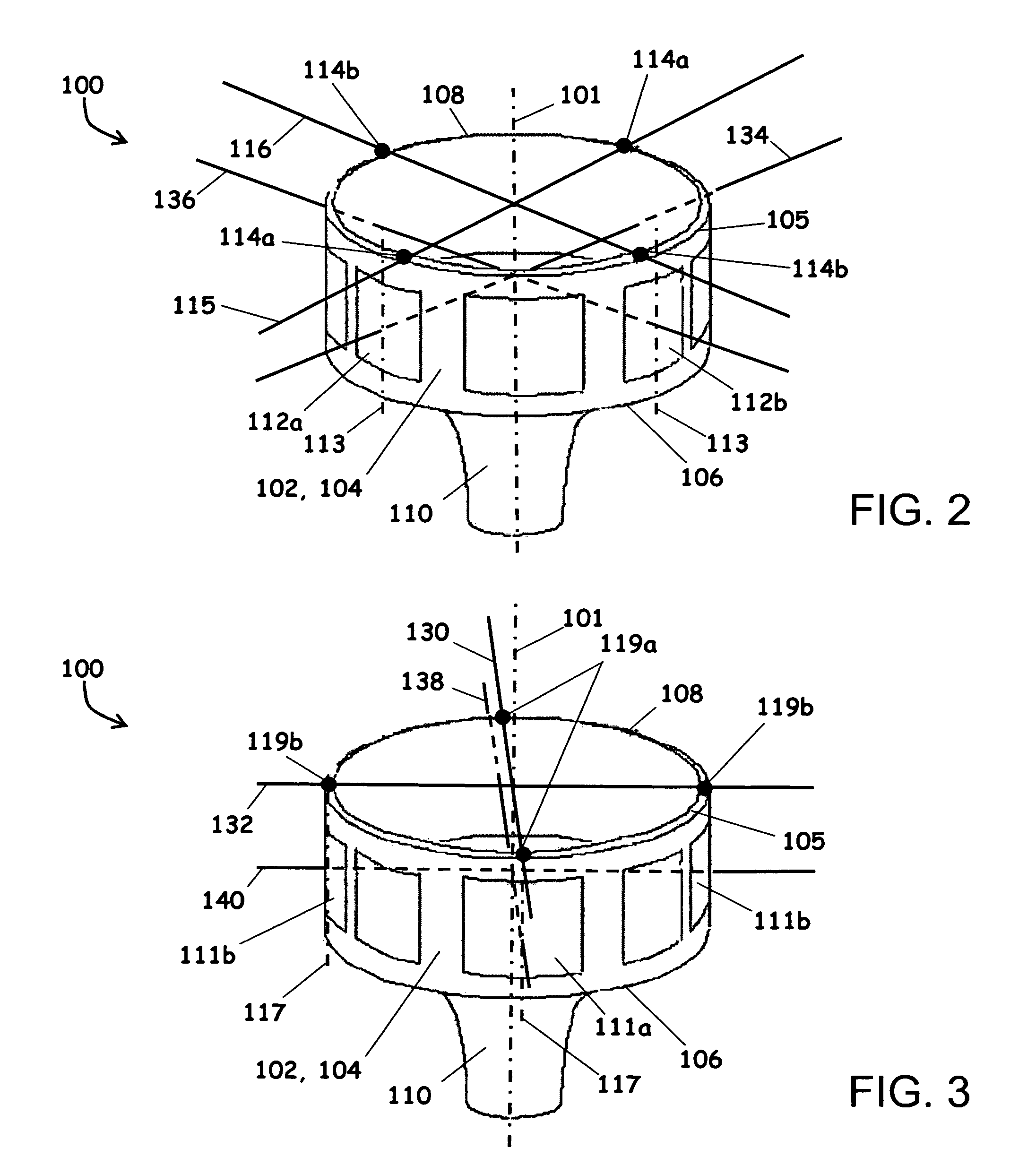Vibrating inertial rate sensor utilizing skewed drive or sense elements
a technology of drive or sense element and vibration inertial rate, which is applied in the direction of acceleration measurement using interia force, turn-sensitive devices, instruments, etc., can solve the problems of affecting the overall uniformity and ability to maintain the desired oscillation mode, the need to regularly compromise the aspiration, and the cost and complexity of gyros, so as to achieve better resonance performance, large signal-to-noise ratio, and greater symmetry
- Summary
- Abstract
- Description
- Claims
- Application Information
AI Technical Summary
Benefits of technology
Problems solved by technology
Method used
Image
Examples
Embodiment Construction
[0041]Referring to FIG. 1, a split drive electrode assembly 30 for correcting undesirable oscillation alignment as is known in the prior art is depicted. The split drive electrode assembly 30 is comprised of a resonator 32 having a generally cylindrical cross-section and features two diametrically opposed drive electrodes 34 and 36, one of which is split into two electrically isolated electrodes 36a and 36b.
[0042]In operation, drive electrode 34 provides a drive signal to generate an oscillation or vibration pattern 38 (shown in phantom) characterized by a pair of node reference axes 40a and 40b, and a pair of antinode reference axes 42a and 42b. The node reference axes 40a and 40b are defined by the points on the vibration pattern 38 where the amplitudes of the oscillation are at local minima. In contrast, the antinode reference axes 42a and 42b are defined by the points on the vibration pattern 38 where the amplitudes of the oscillation are at local maxima. Functionally, the spli...
PUM
 Login to View More
Login to View More Abstract
Description
Claims
Application Information
 Login to View More
Login to View More - R&D
- Intellectual Property
- Life Sciences
- Materials
- Tech Scout
- Unparalleled Data Quality
- Higher Quality Content
- 60% Fewer Hallucinations
Browse by: Latest US Patents, China's latest patents, Technical Efficacy Thesaurus, Application Domain, Technology Topic, Popular Technical Reports.
© 2025 PatSnap. All rights reserved.Legal|Privacy policy|Modern Slavery Act Transparency Statement|Sitemap|About US| Contact US: help@patsnap.com



